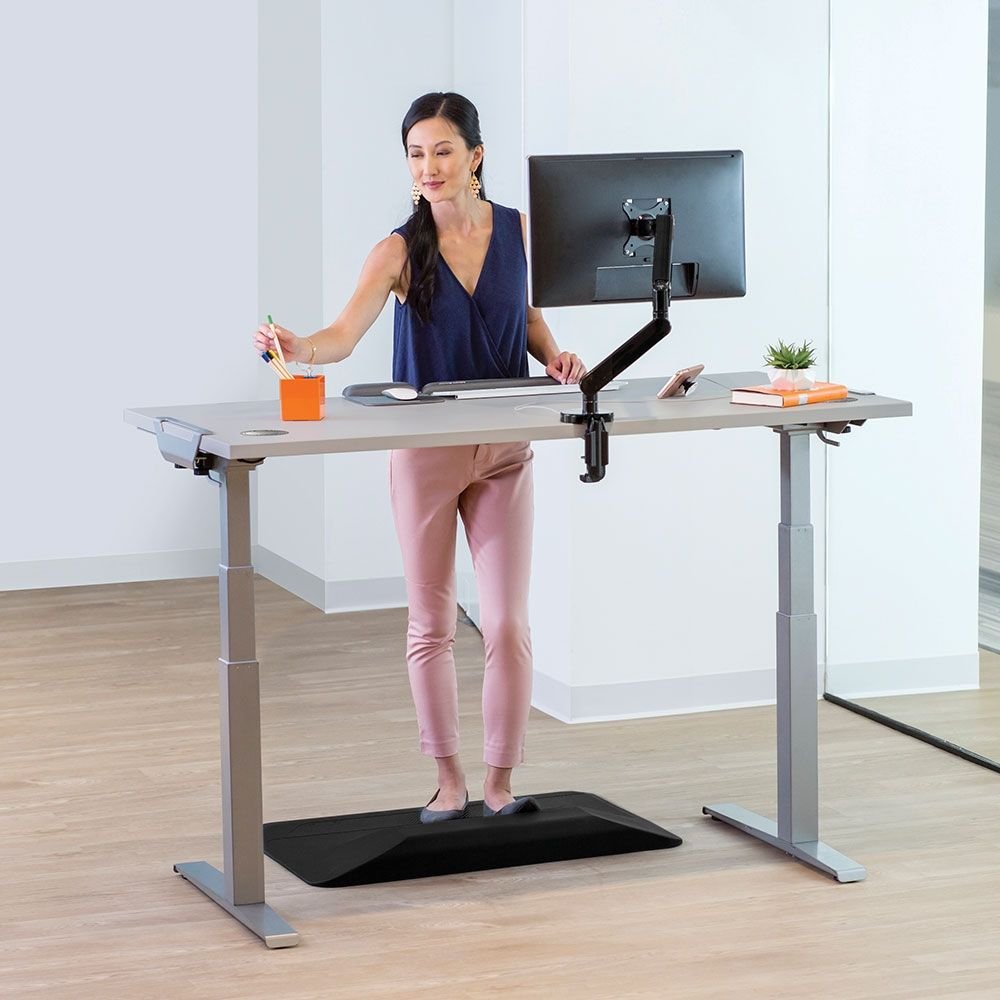Front tine tillers are essential gardening tools designed to break up and aerate the soil, making it easier to plant and cultivate crops. These machines are particularly useful for small to medium-sized garden plots, offering a balance of efficiency and maneuverability.
Unlike rear tine tillers, which have the tines located behind the wheels, front tine tillers have their tines positioned at the front of the machine. This design allows for greater control and ease of use, especially in tighter spaces where precision is crucial.
The primary function of front tine tillers is to prepare the soil for planting by churning and mixing it, which helps incorporate organic matter and nutrients.
This process not only enhances soil structure but also promotes better root growth and water absorption. Front tine tillers are equipped with rotating blades that dig into the soil, breaking up clumps and creating a fine, loose texture ideal for sowing seeds and transplanting seedlings.
One of the key advantages of front tine tillers is their maneuverability. Their compact size and lightweight construction make them easy to handle, even for those new to gardening.
These tillers are designed to be pushed from behind, allowing the user to guide the machine effortlessly around garden beds and along rows. This makes front tine tillers particularly suitable for gardens with limited space and intricate layouts.
Moreover, front tine tillers are generally more affordable and less cumbersome than their rear tine counterparts. They are an excellent choice for gardeners looking for a versatile and cost-effective solution to soil preparation.
While rear tine tillers may be more powerful and suited for larger plots, the best front tine tillers offer a perfect blend of power, precision, and ease of use for most home gardening needs.
When selecting the best front tine tillers for your garden, several key features merit careful consideration to ensure optimal performance and ease of use. The first critical feature is engine power. A robust engine enables the tiller to handle various soil types, from light and sandy to dense and clay-rich.
Typically, an engine power ranging from 5 to 7 horsepower is sufficient for most home gardening needs, providing the necessary strength to break up the soil efficiently.
Tine rotation speed is another pivotal factor. This speed determines how quickly the tines rotate, directly affecting how well the tiller can break up and aerate the soil. Generally, higher rotation speeds result in finer soil texture, which is beneficial for planting.
However, for tougher terrains, moderate speeds can offer better control and prevent the tiller from bouncing or skipping over hard patches.
The width of the tines also plays a significant role. A wider tine width allows you to cover more ground quickly, making it ideal for larger gardens. Standard tine widths range from 12 to 24 inches, with adjustable models offering flexibility for different garden sizes and crop types.
Depth adjustment is equally important as it dictates how deep the tines can penetrate the soil. Adjustable depth settings enable you to customize the tilling depth according to the crops you intend to plant, ensuring proper root development.
Ease of use encompasses several aspects, including the weight and maneuverability of the tiller. Lighter models are easier to handle, especially in tighter garden spaces, while heavier models offer more stability in challenging terrains.
Additionally, the handlebar design can significantly impact user comfort and control. Ergonomically designed handlebars with height adjustments cater to different user preferences and reduce strain during prolonged use.
By thoroughly evaluating these features—engine power, tine rotation speed, tine width, depth adjustment, ease of use, and handlebar design—you can make an informed decision and select the best front tine tiller that meets your gardening requirements, ensuring a productive and enjoyable gardening experience.
Mantis
Mantis is a well-established brand in the gardening industry, renowned for producing some of the best front tine tillers available today. Founded in 1980, Mantis quickly gained popularity due to its durable and efficient gardening tools.
The brand is known for its innovative designs and commitment to enhancing the gardening experience. Mantis tillers are celebrated for their lightweight construction, ease of use, and powerful performance, making them a favorite among both amateur and professional gardeners.
Husqvarna
Husqvarna, a Swedish company with a history dating back to 1689, is a trusted name in outdoor power equipment. Over the years, Husqvarna has built a reputation for manufacturing high-quality, reliable, and efficient gardening tools.
Their front tine tillers are no exception, offering robust engines and advanced features that ensure optimal soil preparation. The brand’s dedication to innovation and quality has solidified its place as a leader in the gardening community, making Husqvarna a go-to choice for many gardeners seeking the best front tine tillers.
Earthquake
Earthquake, a brand under Ardisam, Inc., has been providing top-notch garden equipment since 1960. Specializing in outdoor power tools, Earthquake is well-regarded for its powerful and durable tillers.
The brand’s front tine tillers are designed to handle a variety of soil conditions, offering excellent performance and reliability. Earthquake’s commitment to user satisfaction and continuous improvement has earned it a loyal customer base and a strong reputation in the gardening world.
Troy-Bilt
Troy-Bilt, established in 1937, is another prominent name in the gardening industry, known for its high-quality and innovative garden tools. The brand’s front tine tillers are designed to provide exceptional power and versatility, making them suitable for a wide range of gardening tasks.
Troy-Bilt’s dedication to quality craftsmanship and user-friendly features has made it a preferred choice for gardeners looking for durable and efficient tilling solutions. With a long-standing history and a solid reputation, Troy-Bilt continues to be a leading brand in the market for the best front tine tillers.
Detailed Reviews of the Best Front Tine Tillers

The search for the best front tine tillers can be daunting, given the plethora of options available. To aid your decision-making process, we have compiled in-depth reviews of the top models in the market. These reviews encompass various price points, ensuring suitability for diverse budgets and gardening needs.
1. Earthquake 20015 Versa Front Tine Tiller
Featuring a 99cc Viper engine, the Earthquake 20015 Versa offers a robust performance for medium to large gardens. It boasts a versatile design, easily converting from a tiller to a cultivator. Its adjustable tilling width (11, 16, and 21 inches) allows for precise soil preparation.
Pros: Easy maneuverability, dual functionality, adjustable tilling width.
Cons: Moderate assembly required, slightly noisy.
Customer reviews highlight its power and ease of use, although some note the initial assembly can be a bit challenging. Overall, it’s a solid choice for gardeners seeking versatility and efficiency.
2. Mantis 7940 4-Cycle Tiller
The Mantis 7940 stands out with its lightweight design and powerful 4-cycle engine that eliminates the need for mixing gas and oil. Its compact size and foldable handles make it convenient for storage and transport. The tilling depth of 10 inches ensures thorough soil aeration.
Pros: Lightweight, easy storage, 4-cycle engine.
Cons: Higher price point, smaller tines.
Customers appreciate its ease of use and storage convenience, though some find it less effective for heavy-duty tilling. Ideal for smaller gardens and tight spaces.
3. Yardmax YT5328 Compact Front Tine Tiller
Powered by a 79cc engine, the Yardmax YT5328 is designed for smaller to medium gardens. It features a tilling width adjustable between 11, 16, and 21 inches, and a 7-inch tilling depth. The single-hand operation allows for better control and maneuverability.
Pros: Compact design, adjustable tilling width, single-hand operation.
Cons: Limited power for larger gardens, assembly required.
Users commend its compact size and ease of use, though it may struggle with very tough soil. A practical choice for smaller garden spaces.
4. Craftsman C210 25cc 2-Cycle Tiller
With a 25cc 2-cycle engine, the Craftsman C210 offers reliable performance for small to medium gardens. Its adjustable tilling width (6 to 9 inches) and lightweight frame make it easy to handle. The tiller also features an easy recoil start system.
Pros: Lightweight, easy start, adjustable width.
Cons: Limited tilling depth, smaller engine.
Customer reviews highlight its ease of use and handling, though its power may be insufficient for heavy-duty tasks. Best suited for lighter garden work.
5. Sun Joe TJ604E Electric Tiller
The Sun Joe TJ604E is an electric model with a 13.5-amp motor, offering an eco-friendly alternative to gas-powered tillers. It features a tilling width of 16 inches and a depth of 8 inches. Its collapsible handle provides compact storage.
Pros: Eco-friendly, powerful motor, collapsible handle.
Cons: Requires power source, cord management.
Users praise its environmental benefits and power, though the need for a nearby power source can be limiting. Perfect for eco-conscious gardeners with access to electricity.
These reviews aim to provide a comprehensive understanding of the best front tine tillers available, addressing various needs and budgets. Each model offers distinct advantages, ensuring that you can find the perfect tiller for your gardening requirements.
How to Maintain and Care for Your Front Tine Tiller
Proper maintenance and care are crucial to ensuring the longevity and optimal performance of your front tine tiller. Regular upkeep not only extends the life of your equipment but also ensures that it operates at its best, offering you efficiency and reliability in your gardening tasks.
Below are essential tips and guidelines to help you maintain and care for your best front tine tillers.
Firstly, regular cleaning is fundamental. After each use, make sure to remove any dirt, debris, or plant matter from the tines and the engine area. This prevents buildup that could potentially cause damage or reduce efficiency. Use a brush and a hose to clean hard-to-reach places, ensuring that all parts are free from obstructions.
Secondly, oil changes are a critical part of your maintenance routine. Similar to other mechanical equipment, front tine tillers require fresh oil to function correctly.
Check the oil level before each use and change the oil according to the manufacturer’s guidelines, typically after every 20-25 hours of operation. Using the correct type of oil is also essential, as specified in your tiller’s manual.
Sharpening the tines is another vital maintenance task. Dull tines can cause the tiller to work harder than necessary, leading to faster wear and tear. Inspect the tines regularly and sharpen them as needed using a metal file or a grinder. If the tines are excessively worn or damaged, consider replacing them to maintain the tiller’s efficiency.
Safe storage practices can significantly impact the lifespan of your tiller. Store your front tine tiller in a dry, sheltered place to protect it from the elements.
If you’re storing it for an extended period, such as over the winter, drain the fuel tank to prevent stale fuel from clogging the system. Covering the tiller with a protective cover can also keep dust and moisture at bay.
By adhering to these maintenance and care guidelines, you can ensure that your best front tine tillers remain in excellent working condition, providing you with reliable performance for many gardening seasons to come.
Common Problems and Troubleshooting Tips
Front tine tillers are invaluable tools for any gardening enthusiast, but like all machinery, they can sometimes encounter issues. Knowing how to identify and troubleshoot these problems will ensure your tiller remains in optimal condition.
Here, we address some common problems and provide practical solutions to keep your garden work seamless and efficient.
Engine Starting Problems: One of the most frequent issues with front tine tillers is difficulty in starting the engine. This can be caused by various factors such as stale fuel, clogged fuel lines, or a dirty carburetor.
Begin by checking the fuel; if it has been sitting in the tank for an extended period, replace it with fresh gasoline. Inspect the fuel lines for any blockages and clean or replace them if necessary. Cleaning the carburetor can also resolve starting issues.
If the problem persists, it may be time to replace the spark plug or have a professional take a look at the ignition system.
Uneven Tilling: Uneven tilling can result from worn tines, improper depth settings, or uneven ground. First, examine the tines for wear and tear; replace them if they appear dull or damaged. Adjust the depth settings according to your soil type and desired tilling depth.
For uneven ground, consider making multiple passes at different angles to achieve a more uniform result. Proper maintenance and regular inspection of the tines will help maintain the best front tine tillers’ efficiency.
Unusual Noises: Unusual noises during operation can indicate underlying mechanical issues. Loose bolts, worn bearings, or debris caught in the tines are common culprits. Start by tightening all bolts and screws.
If the noise persists, inspect the bearings for wear and replace them if necessary. Remove any debris that may be entangled in the tines. Persistent unusual noises might require professional examination to prevent further damage.
While some issues can be resolved with basic troubleshooting, it’s essential to recognize when professional assistance is necessary. Regular maintenance and prompt attention to any irregularities will ensure that your front tine tiller remains one of the best investments for your gardening needs.
Front tine tillers have become indispensable tools for gardeners seeking to enhance the health and productivity of their gardens. One of the primary benefits of using a front tine tiller is improved soil aeration.
By breaking up compacted soil and allowing air to circulate more freely, these tillers help create an optimal environment for plant roots. Enhanced aeration ensures that roots have better access to essential nutrients and water, promoting robust plant growth.
Another significant advantage of front tine tillers is their effectiveness in weed control. Weeds can compete with garden plants for nutrients, water, and light, often leading to reduced yields. The best front tine tillers efficiently churn the soil, uprooting weeds and preventing them from establishing a strong foothold.
This mechanical weed control reduces the need for chemical herbicides, making the gardening process more organic and environmentally friendly.
Incorporating compost into the soil is crucial for maintaining soil fertility, and front tine tillers excel at this task. Mixing compost effectively into the soil enhances its structure, increasing its ability to retain moisture and nutrients.
This process results in a richer, more fertile soil that supports healthier plant growth and higher yields. Whether you are preparing the soil for planting or rejuvenating an existing garden bed, a front tine tiller can make the task significantly more manageable and efficient.
Overall, the benefits of using a front tine tiller in your garden are manifold. Improved soil aeration, effective weed control, and enhanced compost mixing all contribute to creating a thriving garden ecosystem.
By investing in one of the best front tine tillers, gardeners can ensure that their plants have the optimal conditions needed for healthy growth and productivity, leading to a more bountiful and beautiful garden.
Conclusion and Final Recommendations
Throughout this comprehensive guide, we have delved into the various aspects of selecting the best front tine tillers for your garden. From understanding the essential features and benefits of front tine tillers to comparing some of the top models available in the market, our goal has been to equip you with the knowledge needed to make an informed decision.
We have explored crucial factors such as engine power, tine rotation, ease of use, and maintenance requirements, highlighting how these elements contribute to the overall performance of a tiller.
When considering the purchase of a front tine tiller, it is vital to assess your specific gardening needs and budget. For those with smaller gardens or lighter soil, a tiller with moderate power and basic features may suffice. Conversely, if you are working with a larger area or tougher soil, investing in a more robust model with advanced capabilities will likely yield better results.
Additionally, think about the frequency of use and the type of tasks you plan to undertake. These considerations will help you choose a tiller that offers the best balance between functionality and cost-efficiency.
We recommend narrowing down your options by reading user reviews and seeking advice from fellow gardeners who have experience with front tine tillers. Doing so can provide valuable insights into the real-world performance and reliability of different models. Remember, the best front tine tiller is one that meets your unique gardening requirements while offering durability and ease of operation.
We encourage you to share your experiences or ask any questions in the comments section below. Your input can be incredibly helpful to others who are also in the market for a front tine tiller. Happy gardening!









